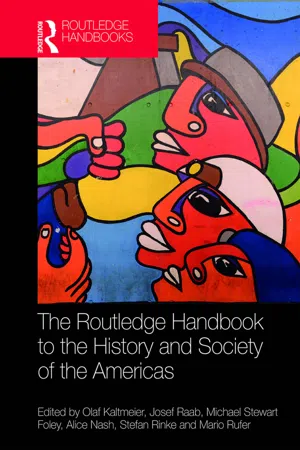History
Proprietary Colonies
Proprietary colonies were colonies in which the land was owned by individuals or groups, rather than the government. These colonies were granted to individuals by the English monarch, giving them significant control over the colony's governance and land distribution. Proprietary colonies were a common form of colonial organization in early American history, with examples including Maryland and Pennsylvania.
Written by Perlego with AI-assistance
Related key terms
2 Key excerpts on "Proprietary Colonies"
- Gregory Feldmeth, Christine Custred(Authors)
- 2015(Publication Date)
- Research & Education Association(Publisher)
By the 1630s, the English crown showed more interest in exercising control over the colonies, and therefore turned away from the practice of granting charters to joint-stock companies and toward granting such charters to single individuals or groups of individuals known as proprietors. The proprietors would actually own the colony and would be directly responsible for it to the king in an arrangement similar to the feudalism of medieval Europe. Though this was seen as providing more opportunity for royal control and less for autonomy on the part of the colonists, in practice, Proprietary Colonies turned out much like the company colonies because settlers insisted on self-government.The first proprietary colony was Maryland, granted in 1632 to George Calvert, Lord Baltimore. It was to be located just north of the Potomac River and to be both a reward for Calvert’s loyal service to the king and a refuge for English Catholics, of whom Calvert was one. George Calvert died before the colony could be planted, but the venture was carried forward by his son Cecilius.From the start, more Protestants than Catholics came. To protect the Catholic minority, Calvert approved an Act of Religious Toleration (1649) guaranteeing political rights to Christians of all persuasions. Calvert also allowed a representative assembly. Economically and socially, Maryland developed as a virtual carbon copy of neighboring Virginia.The CarolinasIn 1663, Charles II, having recently been restored to the throne after a twenty-year Puritan revolution that had seen his father beheaded, moved to reward eight of the noblemen who had helped him regain the crown by granting them a charter for all the lands lying south of Virginia and north of Spanish Florida.The new colony was called Carolina, after the king. In hopes of attracting settlers, the proprietors came up with an elaborate plan for a hierarchical, almost feudal, society. Not surprisingly, this proved unworkable, and despite offers of generous land grants to settlers, the Carolinas grew slowly compared to other colonies.The area of North Carolina developed as an overflow from Virginia with similar economic and cultural features. South Carolina was settled by English planters from the island of Barbados. The planters founded Charles Town (Charleston) in 1670 and brought with them their black slaves; thus, unlike the Chesapeake colonies of Virginia and Maryland, South Carolina had slavery as a fully developed institution from the outset.- Olaf Kaltmeier, Josef Raab, Mike Foley, Alice Nash, Stefan Rinke, Mario Rufer(Authors)
- 2019(Publication Date)
- Routledge(Publisher)
who they were: a predominantly white population of English, Welsh, Irish, and Scottish origin, who mixed very little with the indigenous population (→ Whiteness, I/46). The slave population also kept growing, primarily in the south, where the plantation economy (first cotton and tobacco, then rice and indigo) reached a significant level of development. The absence of a landed elite facilitated a certain degree of equality among the proprietors, who became the leading political and economic agents of the new colonial society.By the mid-17th century, the colonial economy no longer belonged to the two Iberian imperial powers. Rather, America had become a part of the multilateral, international web of exchange that stretched between the shores of the Atlantic.A look into the American interior
Yet how did the American colonial economy evolve in this context? This requires looking at the other side of the equation: the generative, inwardly oriented economy, with its robust domestic markets, a feature of the Iberian (and particularly the Spanish) colonial economies that distinguished them from the settlement and plantation economies.The discovery of resources in this part of the American world gave rise to regional specialization. For that reason, zones devoted to mining and metal production can be seen (plants for mining and refining); zones with the high population needed to perform this work (mining towns); production zones to meet the needs of those populations; and zones in which the products, raw materials, and metals were bought and sold. At the same time, it was necessary to establish fixed ports to gather the metals and merchandise, and to hold annual trade fairs. Distinct commercial zones were set up for this purpose (Havana, Cartagena, Veracruz, Lima), with warehouses equipped to store the merchandise, customs to regulate it, residences for traders to stay in, and headquarters and compounds to keep guard over the merchandise and also to determine the best routes through which to distribute these colonial products to the places where they would be used. Cities were founded (Potosí, Minas Gerais), connecting the routes on which metals, merchandise, and slaves were transported from the ports to the mining towns.
Learn about this page
Index pages curate the most relevant extracts from our library of academic textbooks. They’ve been created using an in-house natural language model (NLM), each adding context and meaning to key research topics.

